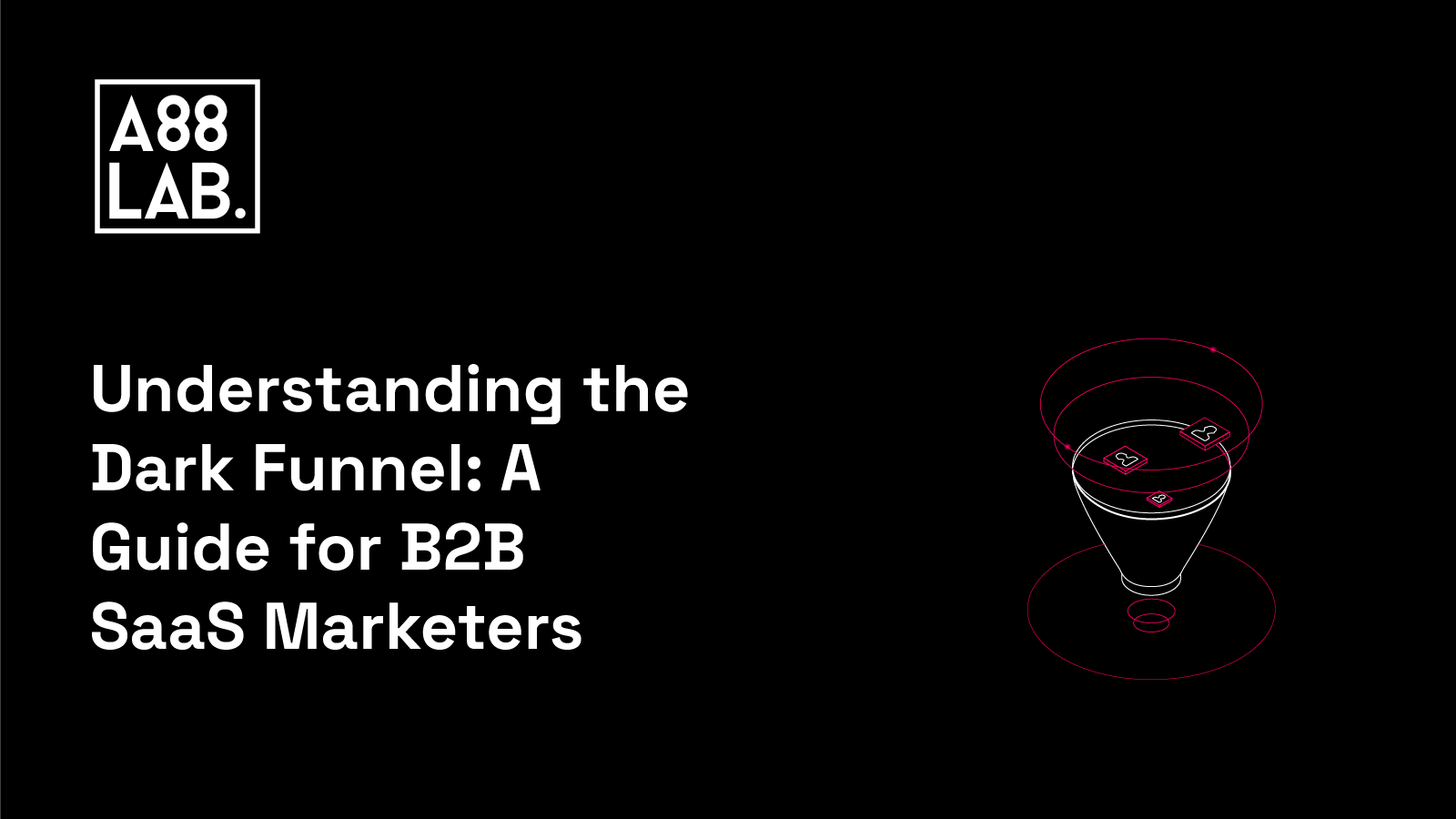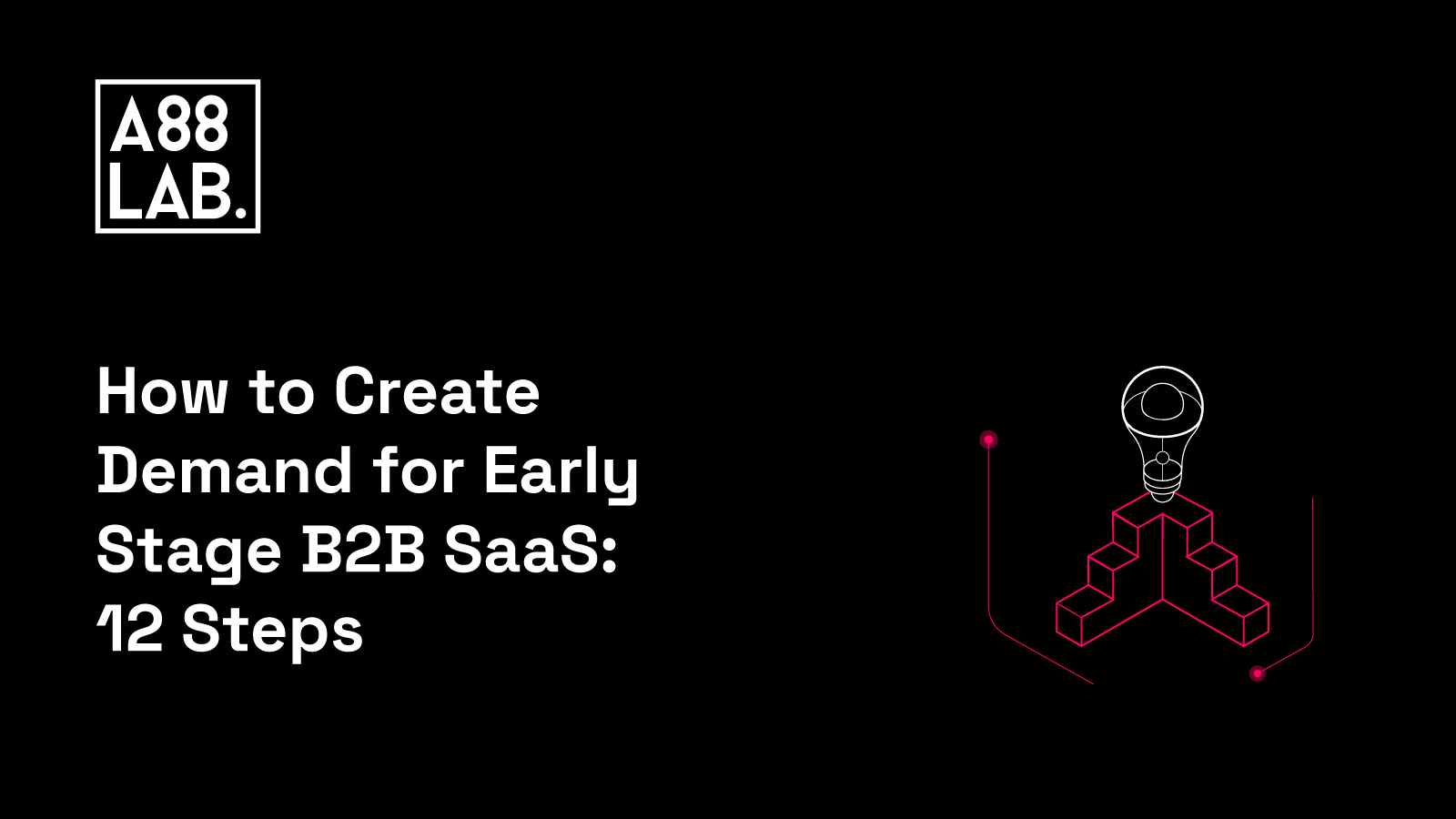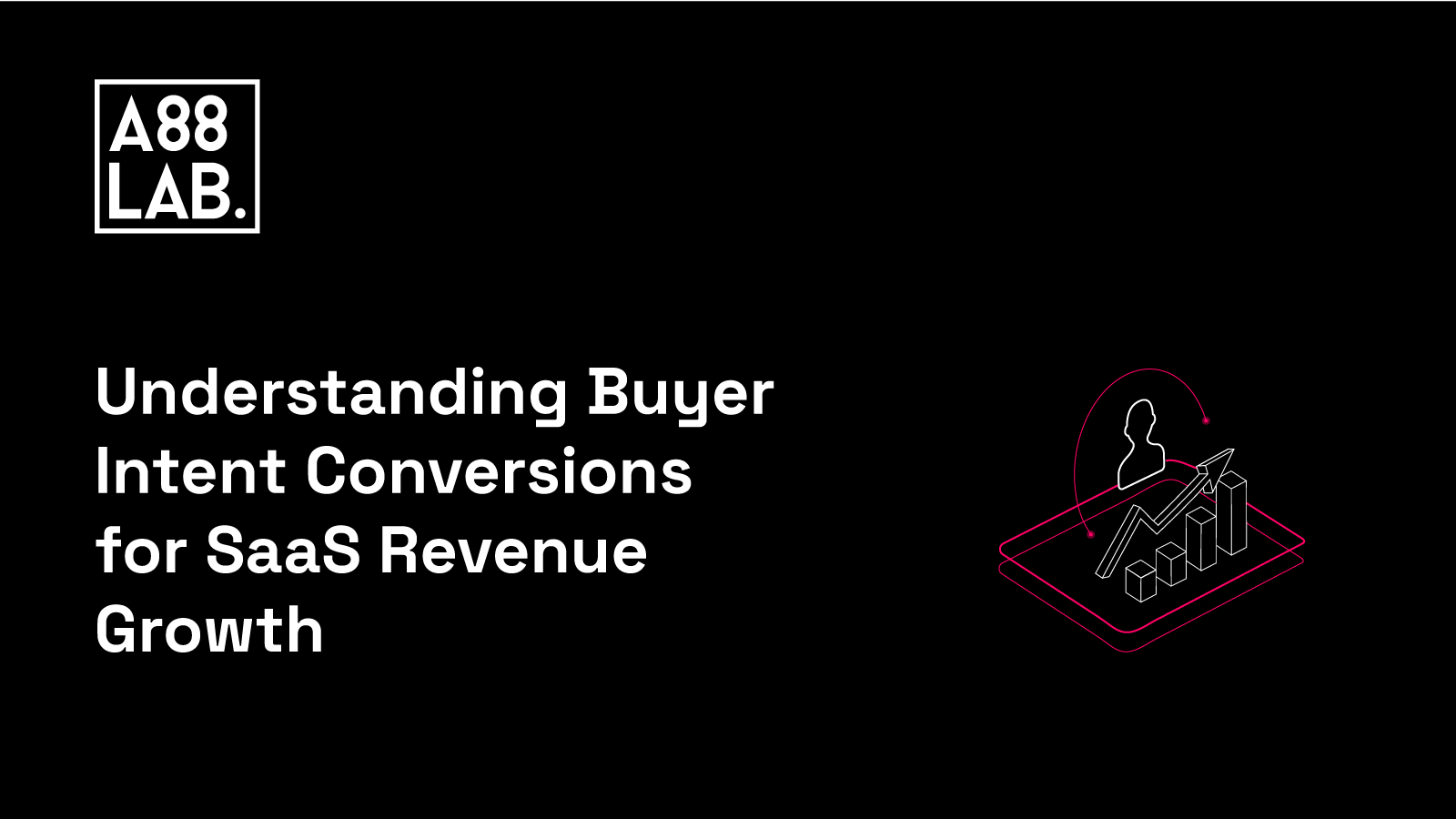Let’s be real: Who doesn’t struggle to track exactly where their website traffic is coming from?
Spoiler: it’s all of us.
Why? Because most of the shares, communications, referrals, and word-of-mouth happens in places your analytics software can’t even touch. Welcome to the dark funnel.
77.5% of social media shares happen through these "invisible" channels. Yeah, that’s a huge chunk of traffic that’s totally off the radar for SaaS businesses. We’re talking about a massive blind spot that no amount of fancy tracking software can solve.
So, what's the game plan?
What is the Dark Funnel?
So, what’s this “dark funnel” thing anyway?
The dark funnel is that sneaky underworld of content sharing happening where your analytics can’t follow. It's when people share your stuff, not on public social media feeds, but in private, one-on-one spaces that leave zero footprints.
Picture this: You send a link over WhatsApp, Slack, or email, and BAM, that’s dark funnel territory. It’s the real word-of-mouth action, happening behind the curtain, in places like private messages or closed group chats. No likes. No shares. No public trail.
Basically, it’s the hidden network where your content goes viral, but your software has no clue. Think of it as the digital equivalent of a secret handshake: effective, but invisible to most tools.
What Does the Dark Funnel Mean for SaaS Marketers?
The dark funnel is the headache SaaS marketers never signed up for. It makes tracking, measuring, and attributing content shares an absolute nightmare. And if you’re not tracking it? You’re flying blind.
Imagine this: A SaaS company drops a new whitepaper, posts it to their socials, and gets a decent amount of engagement. But what they don’t know is that their customers are secretly sharing it through email, WhatsApp, and Slack, driving a huge spike in downloads, completely off the radar. Without a way to measure this, they have no clue how much impact that little post really had.
Here’s a breakdown of how the dark funnel shows up:
a. Private Messaging Apps
Someone shares your content via WhatsApp, Facebook Messenger, or Slack. Now, that’s a dark funnel share. You’ll never see it in your social stats.
Example: A potential customer shares your latest blog post with a colleague on Slack. Now, you’ve got no clue that post led to a new sign-up.
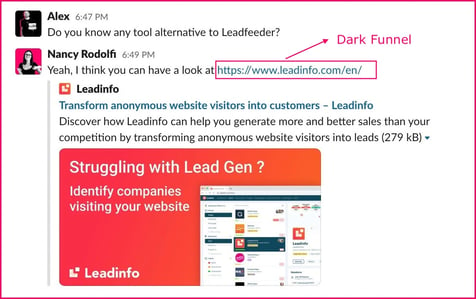
b. Email Sharing
People copy-paste your link into an email and send it off to their team or a friend. Again, it’s a dark funnel, and it’s totally under your radar.
Example: A happy user drops your product link into an email to a friend who’s looking for a solution. Boom, potential conversion that won’t show up anywhere.

c. Word-of-Mouth
People talk about your product in person or over the phone. No public trail. No mention on Twitter. But trust us, it’s happening!
Example: Someone casually recommends your software to a colleague at lunch, and your analytics will never catch that.
d. Closed/Private Communities
Someone shares your content or product recommendation in a private Reddit thread, a closed Facebook group, or even a Quora discussion. Again, no public share, no measurable impact.
Example: A user answers a question on Reddit about your SaaS solution, but you’ll never know how many eyeballs actually saw it.
How Does the Dark Funnel Actually Impact SaaS Companies?
The dark funnel can seriously mess with the way SaaS companies see their growth. We’re talking traffic, brand awareness, customer acquisition, and even your bottom line. If you’re not factoring it in, you’re probably underestimating the true power of your content.
Those invisible shares in private chats and emails drive more results than you think. That means your decisions, how you allocate resources, tweak your campaigns, or measure ROI... could be way off.
Picture this: A SaaS company launches a shiny new feature and promotes it on social media. Maybe they get some decent website traffic from those public posts. But what they don’t know is that their product’s getting tons of traction behind the scenes, through dark funnel shares. Customers send the feature link in private Slack groups, share it in email chains, and recommend it on a Zoom call. Meanwhile, your analytics don’t pick up a thing.
Without visibility into these dark funnel channels, it’s easy to misinterpret your data, miss out on new opportunities, and misdirect your resources. You could be doubling down on the wrong channels, all while ignoring the real game-changers happening in the shadows.
How to Adapt Your Content Strategy for the Dark Funnel
Alright, now that we know the dark funnel’s lurking, what do we do about it? It’s time to rethink your content strategy and embrace the invisible power of those private shares! Here’s how to make it work for you:
1. Create Content That People Want to Share
If you want to get some serious traction in the dark funnel, your content has to be share-worthy. The more engaging, valuable, and easy to share it is, the more likely people will go the extra mile to send it via email, text, or in their private chats.
Think infographics, interactive videos, or even bite-sized, useful factsheets. Content that directly addresses your audience's pain points or adds value will find its way into their private channels.
Example: A SaaS company might create a killer infographic showing how their product improves team productivity. It’s visually engaging, packed with insights, and totally shareable via WhatsApp or email. People can’t help but send it to their colleagues.
2. Use Social Sharing Buttons (But Don’t Rely on Them)
Yes, it’s a no-brainer to have social sharing buttons on your blog or website. While these won’t directly track dark funnel shares, they can give you a glimpse into the public side of things. Plus, they make it easier for your audience to share on platforms like Twitter, LinkedIn, and Facebook.
While you won’t get direct visibility into the dark funnel from these shares, seeing which content gets the most public love can help you understand what’s going under the radar. The more shareable your content is in public spaces, the more likely it is to get shared privately, too.
3. Use UTM Parameters (Without Going Overboard)
UTM parameters might sound nerdy, but they’re a game-changer for tracking your dark funnel shares. By appending these little tags to your links, you can start to spot trends in your traffic that hint at dark funnel activity.
For example, you can create special UTM links for content shared privately. Even though you won’t track the actual share, you’ll at least get a sense of which content is driving traffic that didn’t come from your usual public sources.
It’s not perfect, but it gives you a better idea of the ripple effect your content is having, and helps you track things that aren’t visible on your traditional radar.
Hybrid-Attribution: The Art of Measuring the Unmeasurable
If you want to truly tap into the power of the dark funnel, relying on traditional tracking tools just won’t cut it. You need a next-level approach that blends the best of both worlds.
This is where hybrid attribution comes into play. By combining advanced attribution software with self-reported data from your users, you can unlock deeper insights into the impact of your marketing efforts, especially those tricky dark funnel activities.
Hybrid attribution lets you track what you can (like public social shares) while also gathering valuable intel on what you can’t track (those private, invisible shares). The result? A much clearer picture of how content performs across both visible and hidden channels.
With a solid understanding of how the dark funnel influences your traffic, you can:
-
Make smarter, data-driven decisions
-
Optimize your strategies to capture more of the “hidden” action
-
Allocate your resources more effectively for higher ROI
For instance, by diving into dark funnel trends, you can learn more about your target audience’s preferences, content resonance, and behaviors. This kind of insight allows you to fine-tune your content, messaging, and audience targeting, leading to stronger, more effective campaigns.
But hybrid attribution isn’t just about high-tech tools; you can also tap into some good ol’ fashioned self-reported data to measure dark funnel impact.
1. Surveys and Customer Feedback
Conducting surveys or soliciting customer feedback can provide valuable insights into the sources and channels through which customers discover and share content. Including open-ended questions related to content sharing can help uncover dark funnel activities.
For example, after customers download a whitepaper or complete a purchase, a SaaS company can include a voluntary feedback section that asks, "How did you hear about us?" or "How did you learn about this product?". By analyzing the responses, marketers can gain insights into dark funnel activities and channels.
Here's an example of how we implement this on our website:
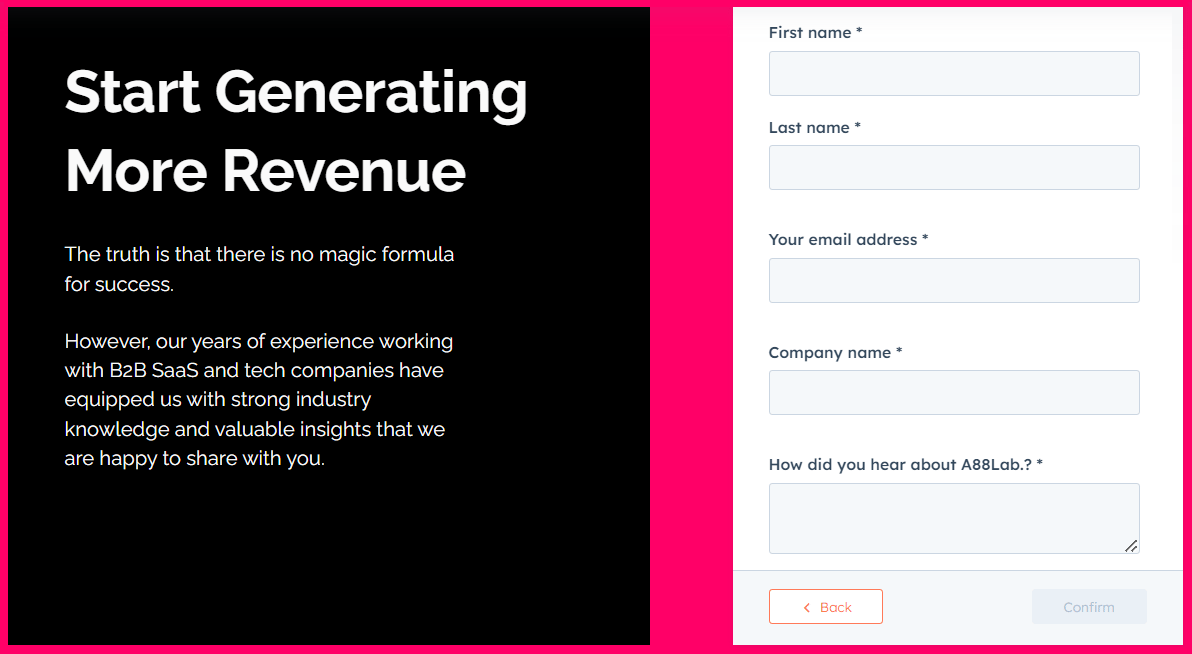
2. Social Listening & Sentiment Analysis
Monitoring social media conversations and sentiment analysis can provide indirect indicators of dark funnel activity. By tracking mentions (@), hashtags (#), and brand references, marketers can gain a broader understanding of content sharing beyond publicly available data.
SaaS marketers can utilize social listening tools like Brandwatch, Hootsuite, or Sprout Social to monitor conversations related to their brand or industry. By analyzing the sentiment and context of these conversations, marketers can identify dark funnel mentions and gauge the impact of shared content.
Interpreting and Acting on the Dark Funnel Metrics
You’ve got the data, but what do you do with it?
When it comes to the dark funnel, it’s about using those insights to level up your marketing. Here’s how SaaS marketers can interpret and act on dark funnel metrics:
a. Spot the trends: Start by looking for patterns in your dark funnel shares. What types of content are getting passed around the most? Which messages are getting traction in private channels? This will give you a clearer picture of your audience’s true preferences, what content really clicks, and even which customers are becoming your biggest advocates.
If you notice that your product demos are frequently shared in Slack channels, it’s a sign that your audience finds that content valuable enough to pass it along. Double down on creating more product-focused content that highlights key features, benefits, and customer success stories.
b. Optimize your content: Dark funnel metrics are about refining your content strategy based on what works. If certain types of content (say, case studies, blog posts, or how-to guides) are getting more private shares, it’s a signal to create more of that stuff.
Look at what’s resonating within these hidden channels, then turn it up to 11. Whether it’s a specific topic, content format, or even the tone of your message, optimize based on those dark funnel signals.
If data shows that infographics are getting tons of private shares in emails, ramp up your design efforts to create more visually compelling, digestible pieces that your audience will want to pass on.
c. Engage with your customers: Don’t just sit back and watch the shares happen, engage with the people driving this dark funnel traffic! When you see that someone consistently shares your content privately, reach out. A simple thank-you, personalized message, or offering additional value can deepen the relationship and increase their likelihood of continuing to share your content.
If a customer regularly shares your blog posts via email or Slack, drop them a note saying, “Hey, thanks for sharing our latest article! We really appreciate the support. Can I help you with anything else?” This kind of engagement strengthens loyalty, turns advocates into super fans, and can also lead to even more dark funnel activity as they share even more.
What Does the Dark Funnel Mean for Demand Generation?
The dark funnel is a double-edged sword for demand generation. Yes, it complicates things, but it also opens up a whole new world of opportunities. The challenge? You can’t measure it as easily. The upside? It forces you to focus on what truly drives customer connection: relationships and content that speaks directly to individuals.
For SaaS marketers, the dark funnel reveals something powerful: it’s a reminder that demand generation isn’t just about blasting your message to the masses, it’s about creating experiences and content that resonate deeply, sparking private, word-of-mouth interactions that are way harder to track but incredibly valuable.
Conclusion
The dark funnel is an opportunity to rethink how you approach demand generation. Not everything can be measured or tracked through traditional tools, but that doesn’t mean it’s any less valuable.
It’s the hidden network of loyal customers, real conversations, and authentic recommendations that can fuel massive growth.
By acknowledging the limitations of current tracking methods, embracing alternative approaches, and tapping into your customers’ insights, you can make the dark funnel work for you. With the right strategies, it can become a game-changer that helps you measure true reach and gives you new opportunities to connect, engage, and grow.
.png)
